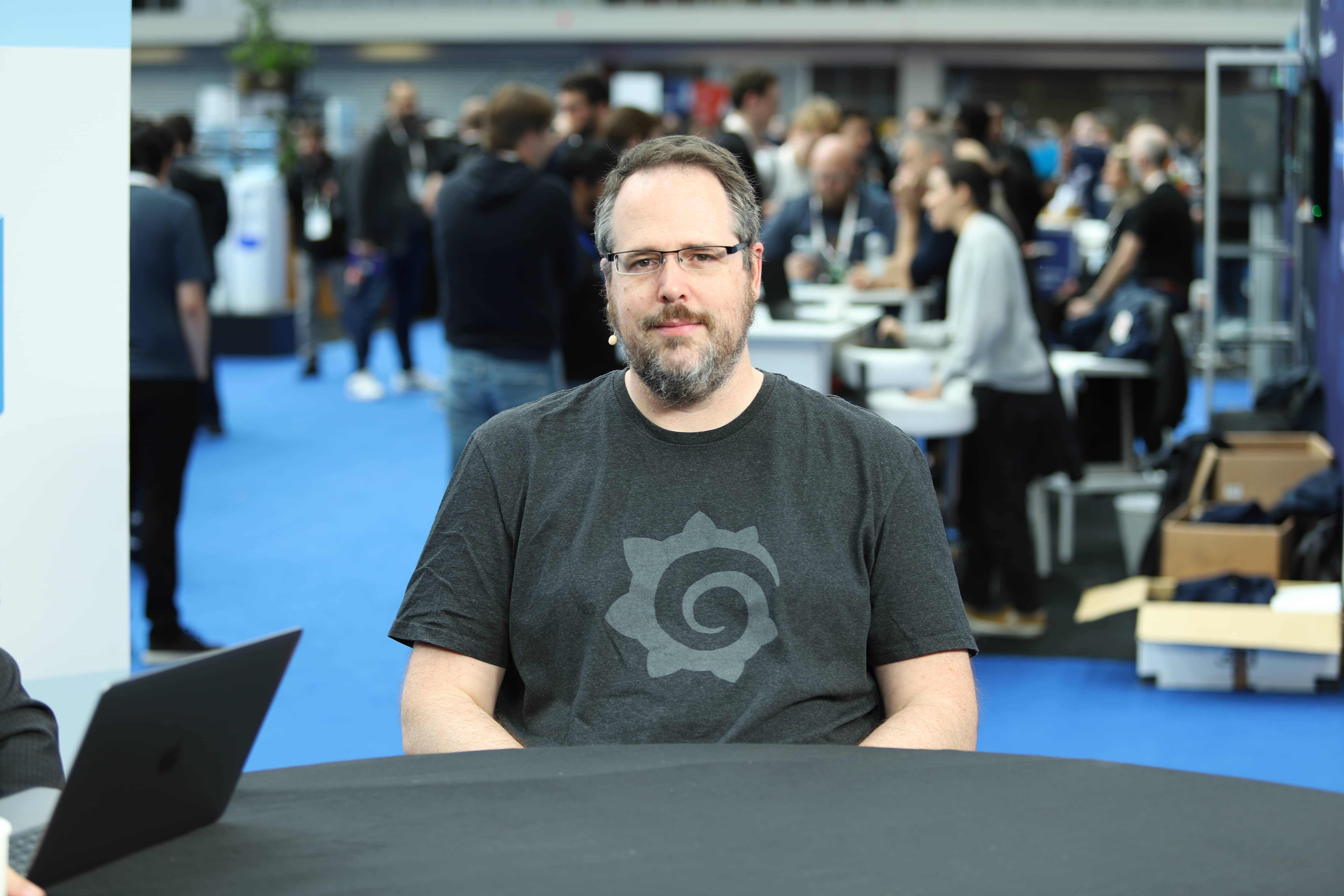 POLICY
POLICY
 POLICY
POLICY
 POLICY
POLICY
Every time there is an infection point in technological innovations, the licensing dynamic comes up.
With things becoming more open with data, licensing code should be simplified using a specific method, such as a reference file, according to Richard Hartmann (pictured), director of community at Raintank Inc. (dba Grafana Labs).
“I like the concept of code pollution, because if you want to build a detector for any radiation today, you need a steel enclosure,” Hartmann said. “Even if it’s just Apache 2 being copied from, you still might have requirements on naming the original authors, retaining copyright headers, things like these. So maybe, at some point, we come to a system where I have a reference file … so I still give some sort of attribution and reflect this in the licensing requirements, instead of having a header again.”
Hartmann spoke with industry analysts John Furrier and Rob Strechay at the recent KubeCon + CloudNativeCon Europe event, during an exclusive broadcast on theCUBE, SiliconANGLE Media’s livestreaming studio. They discussed the importance of licensing in the technology field. (* Disclosure below.)
Since anything that has been generated automatically can be put under copyright, large language modesl should be protected because they are based on code. Data is also safeguarded based on the usage agreement, according to Hartmann.
“As per the licensing agreement with, for example, ChatGPT, they can use all of this to train their model,” he stated. “So they literally have the right to go through all of this very valuable data in theory and just get stuff out which they want.”
When it comes to fine-tuning datasets in LLMs, licensing comes in handy. Fine tuning is also important for optimization purposes, according to Hartmann.
“If you talk to the experts in the field, the actual thing which matters is the much larger body of work on which the initial training was done,” he stated. “This is actually where most of the substance is coming from with the fine tunings, where basically the errors are being weeded out and optimizations are made, so you have less wrong answers.”
Here’s the complete video interview, part of SiliconANGLE’s and theCUBE’s coverage of the KubeCon + CloudNativeCon Europe event:
(* Disclosure: This is an unsponsored editorial segment. However, theCUBE is a paid media partner for KubeCon + CloudNativeCon. Neither Red Hat Inc. nor other sponsors of theCUBE’s event coverage have editorial control over content on theCUBE or SiliconANGLE.)
THANK YOU